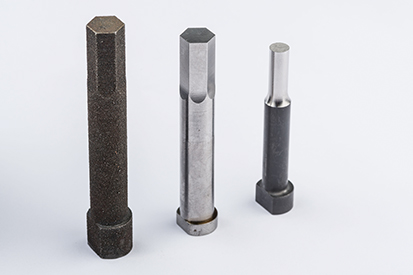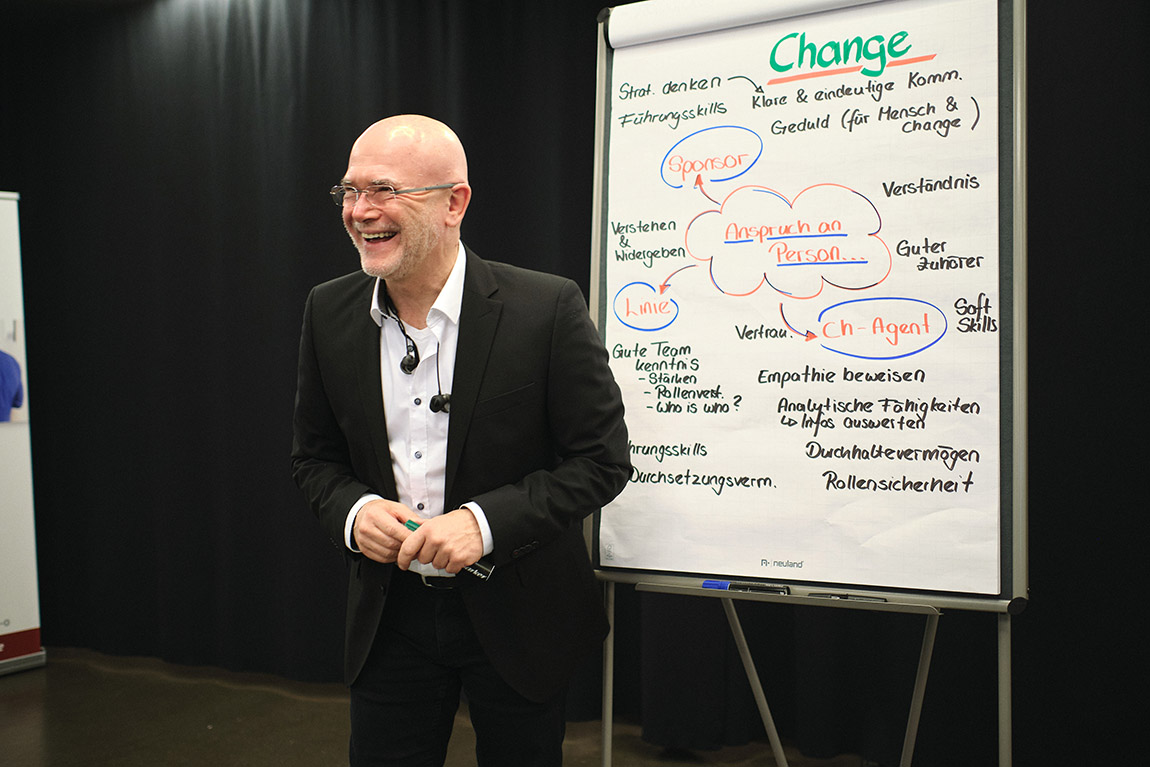KOLIBRI

Individual parts manufacturing using the most wear-resistant steel in the world
TEXT: JESSICA HOLZHAUSEN | PHOTO © KOLIBRI
Know-how when mixing steel and parts manufacturing according to individual clients’ needs, are KOLIBRI Metals’ strong point. The combination of material development and 3D printing is a unique selling point: with its 3D procedure, the company has developed the most wear-resistant steel in the world.
KOLIBRI uses metal powder with very fine particles, no thicker than a hair, for its 3D printing, which a laser melts together layer after layer. “That way, we can produce 3D contours that are not possible with conventional methods,” says managing director Maximilian Bronner. It allows, for example, adding further edges to drill heads and milling machines, to optimise the geometry of cutting areas and add cooling vents. This allows a better drilling capacity with less wear and tear in industries like oil, gas, canal construction and mining.
The idea was born when Maximilian Bronner was still working for an automotive company, but came to visit the company of Axel Wittig and started discussing new methods with him. Both had the idea to combine 3D-print and tool manufacturing. The aim was easily defined, but instead of relying on the standard materials 3D-print machine manufacturers are providing, with the help of their own algorithm, KOLIBRI began printing steel according to the company’s own parameters.
The most wear-resistant, additively produced steel in the world
3D-printing metal is something many other companies are doing as well. What makes KOLIBRI Metals special is the in-house laboratory that mixes the different components for the steel including ceramic and other non-metal components. “That way we can produce materials that until now were impossible to make,” says Bronner. KOLIBRI has produced the most wear-resistant steel in the world: “Our steel is tough and hard,” says Bronner. The degree of hardness is higher than 65 HRC, harder than the steel normally used for knife blades. Pieces made with this steel are ten times more durable than conventional, printable steel. KOLIBRI makes an already good product even better. “We, so to speak, turn a standard vehicle into a race car,” says Maximilian Bronner.
As well as in mining, this steel is used in other areas as well. The additively produced parts enable, for example, a longer lifetime for punching tools and dies in the furniture or automotive industries, as well as the repair of worn-out punching dies. In the production of plastics, integrated cooling channels reduce the cycle time by about 50 per cent. With KOLIBRI, even the most inventive of ideas can now be realised.
Individuelle Teilefertigung aus dem verschleißfestesten Stahl der Welt
Knowhow bei der Mischung des Stahls und nach individuellen Kundenbedürfnissen gefertigte Teile, sind die Stärken von KOLIBRI Metals. Die Kombination aus Materialentwicklung und 3D-Druck ist das Alleinstellungsmerkmal: Das Unternehmen hat mit seinem 3D-Verfahren den verschleißbeständigsten Stahl der Welt entwickelt.
Für den 3D-Druck nutzt KOLIBRI Metallpulver mit sehr feinen, etwa haardicken Partikeln, die ein Laser – Schicht für Schicht – miteinander verschmilzt. „So können wir 3D-Konturen herstellen, die mit herkömmlichen Verfahren nicht gar nicht möglich sind“, sagt Geschäftsführer Maximilian Bronner. So lassen sich zum Beispiel in Bohrköpfe und Fräser zusätzliche Schneiden anbringen, die Schneidflächen in einer optimalen Geometrie anordnen und Kühlschlitze einbauen. Das ermöglicht in der Öl-, Gas-, und Kanal- oder Bergbau-Industrie mehr Bohrleistung bei weniger Verschleiß.
Die Idee entstand, als Maximilian Bronner, damals noch bei einem Automobilhersteller tätig, in die Firma von Axel Wittig kam und beide gemeinsam begannen neue Verfahren zu diskutieren. Dabei entstand die Idee 3D-Druck und Werkzeugbau zu kombinieren. Das Ziel war schnell definiert, aber statt sich auf die Standard-Materialien der 3D-Druck-Maschinenhersteller zu verlassen, begann das Unternehmen mit Hilfe eines selbst entwickelten Algorithmus, eigenen Stahl mit eigenen Parametern zu ‚drucken‘.
Der verschleißbeständigste Stahl der Welt
Metall 3D zu drucken, bieten auch andere Firmen an. Was KOLIBRI Metals besonders macht, ist, dass das hauseigene Labor die Metallmischung mit keramischen und weiteren nicht-metallischen Bestandteilen selbst zusammenstellt. „So können wir Material mischen, das man bislang gar nicht herstellen konnte“, sagt Bronner. KOLIBRI hat inzwischen den verschleißfestesten Stahl der Welt entwickelt: „Unser Stahl ist zäh und gleichzeitig hart“, sagt Bronner. Der Härtegrad ist höher als 65 HRC, das heißt härter als Stahl, der zum Beispiel für Messerklingen verwendet wird. Teile, die mit diesem Stahl hergestellt werden, haben eine zehn Mal größere Verschleißfestigkeit als konventionell druckbare Stahlarten. KOLIBRI macht also ein bereits gutes Produkt, noch besser. „Wir machen sozusagen aus einem Serienfahrzeug einen Rennwagen“, sagt Maximilian Bronner.
Neben dem Bergbau kommt der Stahl auch in anderen Bereichen zum Einsatz: Die additiv hergestellten Teile ermöglichen bei Stanzwerkzeugen für die Möbel- und Automobilindustrie längere Standzeiten, sowie die Reparatur von abgenutzten Stanz-Stempeln. In der Kunststoffverarbeitung reduziert das Einlassen von Kühlkanälen die Zykluszeit um bis zu 50 Prozent. Selbst verrückte Ideen aus Stahl können mit KOLIBRI umgesetzt werden.
Subscribe to Our Newsletter
Receive our monthly newsletter by email





